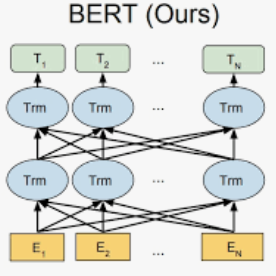An increasing number of individuals are willing to post states and opinions in social media, which has become a valuable data resource for studying human health. Furthermore, social media has been a crucial research point for healthcare now. This paper outlines the methods in our participation in the #SMM4H 2023 Shared Tasks, including data preprocessing, continual pre-training and fine-tuned optimization strategies. Especially for the Named Entity Recognition (NER) task, we utilize the model architecture named W2NER that effectively enhances the model generalization ability. Our method achieved first place in the Task 3. This paper has been peer-reviewed and accepted for presentation at the #SMM4H 2023 Workshop.
相關內容
Acoustic scene classification (ASC) is a crucial research problem in computational auditory scene analysis, and it aims to recognize the unique acoustic characteristics of an environment. One of the challenges of the ASC task is domain shift caused by a distribution gap between training and testing data. Since 2018, ASC challenges have focused on the generalization of ASC models across different recording devices. Although this task in recent years has achieved substantial progress in device generalization, the challenge of domain shift between different regions, involving characteristics such as time, space, culture, and language, remains insufficiently explored at present. In addition, considering the abundance of unlabeled acoustic scene data in the real world, it is important to study the possible ways to utilize these unlabelled data. Therefore, we introduce the task Semi-supervised Acoustic Scene Classification under Domain Shift in the ICME 2024 Grand Challenge. We encourage participants to innovate with semi-supervised learning techniques, aiming to develop more robust ASC models under domain shift.
The collaboration of the real world and the virtual world, known as Digital Twin, has become a trend with numerous successful use cases. However, there are challenges mentioned in the literature that must be addressed. One of the most important issues is the difficulty of collaboration of Digital Twins due to the lack of standardization in their implementation. This article continues a previous work that proposed a generic architecture based on the FIWARE components to build Digital Twins in any field. Our work proposes the use of Linked Open Data as a mechanism to facilitate the communication of Digital Twins. We validate our proposal with a use case of an urban Digital Twin that collaborates with a parking Digital Twin. We conclude that Linked Open Data in combination with the FIWARE ecosystem is a real reference option to deploy Digital Twins and to enable the collaboration between Digital Twins.
Planning has been part of the core pursuit for artificial intelligence since its conception, but earlier AI agents mostly focused on constrained settings because many of the cognitive substrates necessary for human-level planning have been lacking. Recently, language agents powered by large language models (LLMs) have shown interesting capabilities such as tool use and reasoning. Are these language agents capable of planning in more complex settings that are out of the reach of prior AI agents? To advance this investigation, we propose TravelPlanner, a new planning benchmark that focuses on travel planning, a common real-world planning scenario. It provides a rich sandbox environment, various tools for accessing nearly four million data records, and 1,225 meticulously curated planning intents and reference plans. Comprehensive evaluations show that the current language agents are not yet capable of handling such complex planning tasks-even GPT-4 only achieves a success rate of 0.6%. Language agents struggle to stay on task, use the right tools to collect information, or keep track of multiple constraints. However, we note that the mere possibility for language agents to tackle such a complex problem is in itself non-trivial progress. TravelPlanner provides a challenging yet meaningful testbed for future language agents.
Graphs are important data representations for describing objects and their relationships, which appear in a wide diversity of real-world scenarios. As one of a critical problem in this area, graph generation considers learning the distributions of given graphs and generating more novel graphs. Owing to their wide range of applications, generative models for graphs, which have a rich history, however, are traditionally hand-crafted and only capable of modeling a few statistical properties of graphs. Recent advances in deep generative models for graph generation is an important step towards improving the fidelity of generated graphs and paves the way for new kinds of applications. This article provides an extensive overview of the literature in the field of deep generative models for graph generation. Firstly, the formal definition of deep generative models for the graph generation and the preliminary knowledge are provided. Secondly, taxonomies of deep generative models for both unconditional and conditional graph generation are proposed respectively; the existing works of each are compared and analyzed. After that, an overview of the evaluation metrics in this specific domain is provided. Finally, the applications that deep graph generation enables are summarized and five promising future research directions are highlighted.
In pace with developments in the research field of artificial intelligence, knowledge graphs (KGs) have attracted a surge of interest from both academia and industry. As a representation of semantic relations between entities, KGs have proven to be particularly relevant for natural language processing (NLP), experiencing a rapid spread and wide adoption within recent years. Given the increasing amount of research work in this area, several KG-related approaches have been surveyed in the NLP research community. However, a comprehensive study that categorizes established topics and reviews the maturity of individual research streams remains absent to this day. Contributing to closing this gap, we systematically analyzed 507 papers from the literature on KGs in NLP. Our survey encompasses a multifaceted review of tasks, research types, and contributions. As a result, we present a structured overview of the research landscape, provide a taxonomy of tasks, summarize our findings, and highlight directions for future work.
Deep neural models in recent years have been successful in almost every field, including extremely complex problem statements. However, these models are huge in size, with millions (and even billions) of parameters, thus demanding more heavy computation power and failing to be deployed on edge devices. Besides, the performance boost is highly dependent on redundant labeled data. To achieve faster speeds and to handle the problems caused by the lack of data, knowledge distillation (KD) has been proposed to transfer information learned from one model to another. KD is often characterized by the so-called `Student-Teacher' (S-T) learning framework and has been broadly applied in model compression and knowledge transfer. This paper is about KD and S-T learning, which are being actively studied in recent years. First, we aim to provide explanations of what KD is and how/why it works. Then, we provide a comprehensive survey on the recent progress of KD methods together with S-T frameworks typically for vision tasks. In general, we consider some fundamental questions that have been driving this research area and thoroughly generalize the research progress and technical details. Additionally, we systematically analyze the research status of KD in vision applications. Finally, we discuss the potentials and open challenges of existing methods and prospect the future directions of KD and S-T learning.
Most existing knowledge graphs suffer from incompleteness, which can be alleviated by inferring missing links based on known facts. One popular way to accomplish this is to generate low-dimensional embeddings of entities and relations, and use these to make inferences. ConvE, a recently proposed approach, applies convolutional filters on 2D reshapings of entity and relation embeddings in order to capture rich interactions between their components. However, the number of interactions that ConvE can capture is limited. In this paper, we analyze how increasing the number of these interactions affects link prediction performance, and utilize our observations to propose InteractE. InteractE is based on three key ideas -- feature permutation, a novel feature reshaping, and circular convolution. Through extensive experiments, we find that InteractE outperforms state-of-the-art convolutional link prediction baselines on FB15k-237. Further, InteractE achieves an MRR score that is 9%, 7.5%, and 23% better than ConvE on the FB15k-237, WN18RR and YAGO3-10 datasets respectively. The results validate our central hypothesis -- that increasing feature interaction is beneficial to link prediction performance. We make the source code of InteractE available to encourage reproducible research.
Object detection, as of one the most fundamental and challenging problems in computer vision, has received great attention in recent years. Its development in the past two decades can be regarded as an epitome of computer vision history. If we think of today's object detection as a technical aesthetics under the power of deep learning, then turning back the clock 20 years we would witness the wisdom of cold weapon era. This paper extensively reviews 400+ papers of object detection in the light of its technical evolution, spanning over a quarter-century's time (from the 1990s to 2019). A number of topics have been covered in this paper, including the milestone detectors in history, detection datasets, metrics, fundamental building blocks of the detection system, speed up techniques, and the recent state of the art detection methods. This paper also reviews some important detection applications, such as pedestrian detection, face detection, text detection, etc, and makes an in-deep analysis of their challenges as well as technical improvements in recent years.
Automatic image captioning has recently approached human-level performance due to the latest advances in computer vision and natural language understanding. However, most of the current models can only generate plain factual descriptions about the content of a given image. However, for human beings, image caption writing is quite flexible and diverse, where additional language dimensions, such as emotion, humor and language styles, are often incorporated to produce diverse, emotional, or appealing captions. In particular, we are interested in generating sentiment-conveying image descriptions, which has received little attention. The main challenge is how to effectively inject sentiments into the generated captions without altering the semantic matching between the visual content and the generated descriptions. In this work, we propose two different models, which employ different schemes for injecting sentiments into image captions. Compared with the few existing approaches, the proposed models are much simpler and yet more effective. The experimental results show that our model outperform the state-of-the-art models in generating sentimental (i.e., sentiment-bearing) image captions. In addition, we can also easily manipulate the model by assigning different sentiments to the testing image to generate captions with the corresponding sentiments.
Image segmentation is still an open problem especially when intensities of the interested objects are overlapped due to the presence of intensity inhomogeneity (also known as bias field). To segment images with intensity inhomogeneities, a bias correction embedded level set model is proposed where Inhomogeneities are Estimated by Orthogonal Primary Functions (IEOPF). In the proposed model, the smoothly varying bias is estimated by a linear combination of a given set of orthogonal primary functions. An inhomogeneous intensity clustering energy is then defined and membership functions of the clusters described by the level set function are introduced to rewrite the energy as a data term of the proposed model. Similar to popular level set methods, a regularization term and an arc length term are also included to regularize and smooth the level set function, respectively. The proposed model is then extended to multichannel and multiphase patterns to segment colourful images and images with multiple objects, respectively. It has been extensively tested on both synthetic and real images that are widely used in the literature and public BrainWeb and IBSR datasets. Experimental results and comparison with state-of-the-art methods demonstrate that advantages of the proposed model in terms of bias correction and segmentation accuracy.





